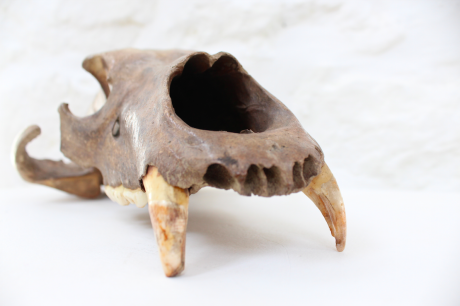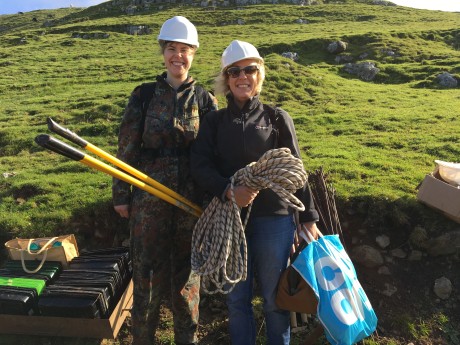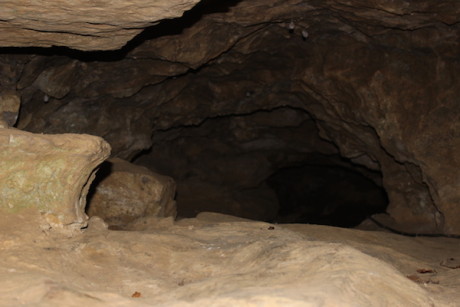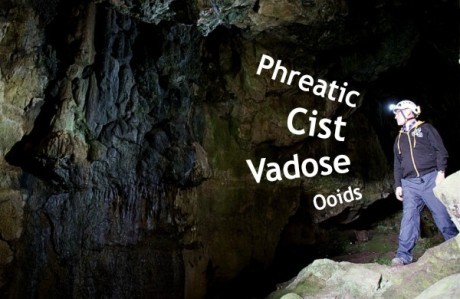
Imagine being the first human to arrive in the north of England after the last Ice Age. After an incredibly long journey, you reach a cave that looks like somewhere you could rest. You tentatively poke your head inside to suss it out. It looks promising. You head further in, and there, right at the back of the cave, you find… an enormous bear skull.
How would you feel? Terrified, or humbled? Today, we’re pretty soppy about bears. Both Paddington and Goldilocks’ family of porridge-eaters are cherished childhood companions. But this deep affinity many of us feel for bears isn’t new. Our close association with these wild and ferocious animals goes back deep into the mists of time.
Once upon a time, things were un-bearably cold
Victoria Cave in Yorkshire preserves one of the most complete environmental records of climate change over the last 600,000 years. This is where mid-Victorian scientists found evidence to finally prove that the Ice Age was not a continuous period of freezing cold, but alternated with warmer periods. They also produced the first recorded evidence of humans returning to the north of England after the end of the last Ice Age, and the last evidence of wild lynx in the UK.
But deep inside, archaeologists also found two skulls belonging to brown bears. Yes, bears were once native to Yorkshire and to anyone who is interested in what was going on in Britain during the Ice Age, these two skulls are a monumental discovery. Bear with me while I explain…
Pioneering bears in Yorkshire’s new landscape
Radiocarbon dating shows that the first – a female skull – is 14,600 years old. That means she arrived in the cave almost immediately after the end of the last Ice Age. After a long period of being way too cold for anything to survive, the area was in fact re-inhabited very rapidly. Meanwhile, the bone chemistry of the male bear skull showed that he had grown fat on plant stuff – a huge insight into the foodchain of what must have remained a vast, open landscape.
But these bears aren’t just important because of what they tell us about the environment. They’re also important because of what they tell us about the human story.
This cave ain’t big enough for the two of us

Painting of a cave bear inside Chauvet Cave, France.
Archaeologists have made plenty of discoveries that show close physical association between humans and bears – they have shared the same domain – caves – ever since the Palaeolithic, and that humans not only anthropomorphised bears in their artwork, but venerated them as mighty, or even ancestral, humans.
It’s easy to see why. They can stand on two legs, reach for food with their paws and their eyes are on frontal plane (pretty rare in animals) which gives them a recogniseable face. They have a similar diet and even occupy the very same caves.
Bears skulls may have been treated as ritual artefacts
One incredible example of this is Chauvet Cave in France. Humans famously decorated its walls with paintings of bison over 32,000 years ago. But the artists weren’t the cave’s only occupants. As well as images of bears, archaeologists also found over 150 cave bear skeletons, and the soft clay of the floor still carries paw prints and sleeping hollows.
Perhaps most dramatically, they found a bear skull perched high up on a ledge. It must have been carefully placed – there is no other way it could have got there. In other caves across central Europe, bear skulls have been found arranged in circles inside richly decorated chambers. There is even evidence that humans hunted and ate bears, and carved their bones to make tools and weapons.
In life they were seen as big, furry human cousins
The importance of bears carries on long after the Ice Age. Linguistic evidence suggests that bears have long been held in high regard around the world, and have even been worshipped as spirit ancestors.
In Eurasia, bears have been endowed with names like fur father, old claw man, old father and the old man with a fur garment. In North America, the bear was known as cousin, or grandfather, four-legged human and Chiefs son. These names all suggest that bears were seen as mighty, perhaps even ancestral humans who stood tall on two legs.
So why did the Christians massacre bears?
Bears have been important in many religions, including Christianity. Saints famously tamed bears as a sign of their holiness, with Saint Ursula earning the name for saving some virgins from bears. But things soon turned pretty sour.
The bear cults of the old Pagan religions meant that bears were seen as a threat to Christianity, and a hindrance to the conversion of Pagan people. Bears were hunted, persecuted and massacred by order of the Catholic church in an attempt to demythologise the bear. Gradually, they slowly replaced the bear in religious imagery and the new symbol became the lion. In a sense, bears were so important, they had to be erased from history.
The human-bear relationship gets worse, before it gets better
The Jacobeans are famous for the cruel sport of bear-baiting. But one theory suggests even this bloodlust reflects a deep human affinity with bears. This human-like animal was the perfect target onto which people could transfer the brutalisation they felt out of poverty and by an oppressive regime.
Coming back the to bears at Victoria Cave, we’ve got to ask – how did humans feel when they entered the cave? Bears were the pioneers of this freshly deglaciated landscape, but humans weren’t far behind. In fact, the first evidence we have of humans returning to the area also comes from Victoria Cave, just one century after the pioneering bears.
An overwhelming discovery for the first humans of Victoria Cave
These artefacts include a javelin point carved from antler, and a cut-marked wild horse bone that date to 14,500 and 14,400 years old respectively. These humans are Magdalenian, with the same cultural background as those who supposedly painted the caves of Creswell Crags.
These first bits of evidence from Victoria Cave are a tantalising glimpse into the earliest human occupation of the Yorkshire Dales. For us, handling this incredible specimen has been an awesome experience. For those who first encountered it over 14,000 years ago, it must have been even more so.
Anyone fascinated by these events is welcome to join us as we explore more of the archaeology that’s yet to be found in Yorkshire’s caves and work to make this incredible collection available online.


